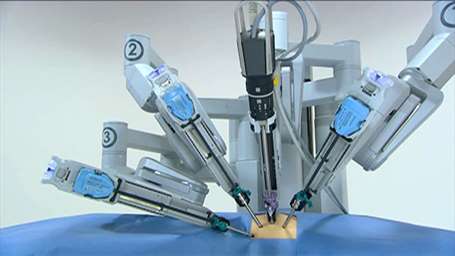
Introduction
Robotic surgery, computer-assisted surgery, and robotically-assisted surgery are terms for technological developments that use robotic systems to aid in surgical procedures. Robotically-assisted surgery was developed to overcome the limitations of minimally-invasive surgery and to enhance the capabilities of surgeons performing Robotic Surgery in Delhi NCR.
In the case of robotically-assisted minimally-invasive surgery, instead of directly moving the instruments, the surgeon uses one of the methods to control the instruments; either a direct telemanipulator and through computer control. A telemanipulator is a remote manipulator that allows the surgeon to perform the normal movements associated with the surgery whilst the robotic arms carry out those movements using end-effectors and manipulators to perform the actual surgery on the patient.
The da Vinci Surgical System comprises three components: a surgeon’s console, a patient-side robotic cart with 4 arms manipulated by the surgeon (one to control the camera and three to manipulate instruments), and a high-definition 3D vision system. Articulating surgical instruments are mounted on the robotic arms which are introduced into the body through cannulas.
The da Vinci senses the surgeon’s hand movements and translates them electronically into scaled-down micro-movements to manipulate the tiny proprietary instruments. It also detects and filters out any tremors in the surgeon's hand movements, so that they are not duplicated robotically. The camera used in the system provides a true stereoscopic picture transmitted to a surgeon's console.
Application of Robotic in General Surgery
-
Foregut surgery
- Nissen fundoplication
- Heller myotomy
- Esophagectomy
- Gastrectomy and subtotal gastrectomy
-
Hepatobiliary Surgery
- Cholecystectomy
- Hepatic lobectomy and segmentectomies
-
Endocrine Surgery
- Adrenalectomy
-
Bariatric Surgery
- Sleeve gastrectomy
- Gastric bypass
Comparison of conventional laparoscopic surgery versus robot-assisted surgery
| Conventional Laparoscopic Surgery | Robot-assisted surgery | |
|
Advantages |
|
|
|
Disadvantages |
|
|
Advantages and disadvantages of robot-assisted surgery versus conventional surgery
|
|||||||||||||||||||||||||||||||||||||
Conclusion
Although still in its infancy, robotic surgery has already proven itself to be of great value, particularly in areas inaccessible to conventional laparoscopic procedures. It remains to be seen, however, if robotic systems will replace conventional laparoscopic instruments in less technically demanding procedures. In any case, robotic technology is set to revolutionize surgery by improving and expanding laparoscopic procedures, advancing surgical technology, and bringing surgery into the digital age. Furthermore, it has the potential to expand surgical treatment modalities beyond the limits of human ability.

